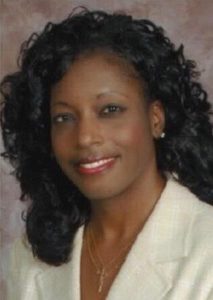
Crisis Teaching and Current Events
Teaching-learning is often a perilous process. Occasionally, in the midst of delivering carefully structured lectures, facilitating balanced yet critically engaging discussions, or working with students one-on-one, life intervenes in a dramatic and direct fashion.
Three years ago, I was teaching a summer course on Methodist church history for Master of Divinity students pursuing ordination at Perkins School of Theology at Southern Methodist University. Right after we began the section on Black Methodism, Dylann Roof walked into a Bible study class at Emanuel African Methodist Episcopal Church in Charleston, South Carolina and killed nine people, including the pastor.
The world was rife with shock and grief. We, ourselves church leaders, Bible study teachers, and ministerial workers, were actively engaged in crafting understandings of ecclesiastical history in order to refine vocational skills. Students (and instructor) processed painful emotions derived from a current event that hit close to home. Empathy with the victims and their families mingled with rage, disbelief, and ultimately, compassion for the tormented assailant.
Socrates reportedly once said, “I cannot teach anybody anything. I can only make them think.” For me, as instructor, a pedagogical opportunity had arisen. I found myself addressing a contemporary demonstration of the societal and cultural terror that necessitated the original founding of Black Methodism while teaching a section on Black Methodism in a Methodist history class.
In that moment, critical analysis of the broader sweep of church history and its convergence within the present was essential. It was important to help students utilize the historical information they were acquiring in light of current events. Balancing both sets of data, the historical record and the contemporary event, opened the way for collective inquiry, sharing, and judging right there in the classroom.
This experience reveals a wider view of pedagogical method. By allowing students to ask and respond to critical questions, underlying assumptions are revealed. Students are then invited to further examine the nature of their assumptions. Have key events and concepts been adequately accessed? Does other relevant information exist that may shed light on these assessments? What are the logical implications of this view? Are there alternatives? If so, are they just as reasonable?
Thus, one of the ways student-learners develop critical thinking skills is through the facilitation of teacher-learners who ask questions and respond to answers with more questions. While acknowledging the contributions of students equitably (and encouraging all to participate) facilitators move the discussion forward by engaging questions that maintain focus on the stated goals of the course. This includes summarizing the status of reflections, critical points, and remaining questions.
However, it is also crucial to keep in mind that students may harbor feelings of trauma and stress sparked by the evaluation of historical knowledge and associated current events. Creating a classroom that nurtures the student voice through affirmation of shared experience fosters safe space. The use of critical thinking in analyzing history, which is oftentimes quite troubling, engenders the technique of practical engagement with personal and social traumas. And, sensitivity to cultural diversity, religious difference, and doctrinal belief is paramount in cultivating a healing environment. This includes the overt recognition and appreciation of differing and conflicting opinions. Paying attention to the energy of the class, body language of students, and other contextual signs will determine choice of direction that a teacher-learner may take, even while encouraging rational analysis of stated views.
Taking a synergistic approach, that is, dialectical interaction among teacher-learners and student-learners, therefore allows room for reasoned critique of hypothetical assumptions as well as the emotional processing of potentially painful experiences. Effective execution requires heightened attention to the needs of students and patience with the flow of communication. This can be challenging, particularly when unexpected realities shatter benignly anticipated teaching moments carefully structured by course design. Instructors must, therefore, be gentle with themselves and practice flexibility in meeting the demands of challenging and/or controversial teaching moments.
Although teaching does involve the transmission of knowledge, the ultimate goal of teaching lies in the cultivation of tools that allow students effective engagement in critical discernment of the world, leading to reasonably based decision making.
In our Methodist History course, the shootings by a crazed supremacist at the historic Mother Emmanuel Church were a sobering occasion that offered the chance for systemic appraisal of institutional structures in church and society that continue to perpetuate racial violence. This unfortunate and deeply traumatic event provided context to evaluate broadly how various interlocking systems lead to experiential sufferings that are typically passed down generationally. As we grappled with the pain enkindled by this senseless act (which will reverberate in the annals of traumatic historical events) insightful theological and practical observations, deduced by critical analysis, were honed.
Like the rest of the world, our class did not emerge emotionally unscathed by facing the horrors of history alive and well in today’s world that mournful day. We did, however, incorporate pedagogical tools, that, with repeated and improved use, are designed to foster growth and empowerment in teaching, learning, and living as responsible citizens.
Leave a Reply